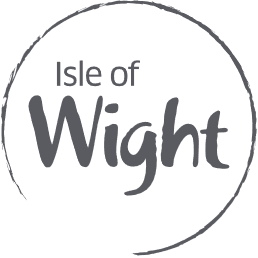The Isle of Wight is home to some of the most enchanting woodlands and forests in the UK, offering scenic walks, wildlife encounters, and seasonal spectacles like carpets of bluebells in the spring. Whether you’re after a family-friendly stroll, a picnic in the woods, or a more adventurous hike, our diverse woodlands provide something special for everyone.
From ancient trees that have stood for centuries to hidden glades full of wildlife, each forest has its own story to tell. Don’t miss the chance to spot red squirrels, listen to birdsong, or simply bask in the natural beauty that changes with every season. Autumn brings a kaleidoscope of colours, while summer offers shaded escapes from the heat.
For more ideas on woodland walks, check out our blog post and start planning your perfect woodland adventure.

Exploring our forests in the West:
Brighstone Forest
Brighstone Forest, the largest forest on the Isle of Wight, is a haven for hiking and mountain biking enthusiasts. With sweeping views across the Island's countryside, it’s a perfect place to immerse yourself in nature. The forest is especially popular in autumn when the trees turn a golden hue, making it a photographer’s dream. Wildlife like red squirrels, badgers, and various bird species can be spotted, so bring your binoculars!
Best time to visit: Autumn for vibrant foliage, and spring for blooming wildflowers.
Bouldnor Forest Nature Reserve
Located near Yarmouth, Bouldnor Forest offers stunning coastal views alongside ancient woodlands. Managed by the Hampshire & Isle of Wight Wildlife Trust, this nature reserve is an important site for biodiversity, with rare lichens, mosses, and the Island’s iconic red squirrels. The mix of broadleaf and conifer trees makes for a varied walking experience, especially during the cooler months.
Best time to visit: Year-round, but particularly beautiful in late spring and early summer.
Mill Copse
Mill Copse is a small but delightful woodland near Yarmouth. This ancient woodland is ideal for shorter walks and is great for a peaceful escape from the bustling town. With a rich history dating back centuries, it’s an enchanting spot for a leisurely stroll, particularly in the spring when the air is filled with birdsong.
Best time to visit: Spring, when the bluebells and wildlife are at their best.
Ningwood Common Nature Reserve
This secluded reserve, managed by the Hampshire & Isle of Wight Wildlife Trust, offers a more rugged woodland experience. It’s a great place to explore for those looking for a peaceful, wildlife-rich environment. With heather, gorse, and native trees, Ningwood Common is a wonderful spot for walking and enjoying the tranquil beauty of the island’s northern woodlands.
Best time to visit: Early autumn when the heather is at its peak.
.jpg)
Discovering our forests in the East:
Firestone Copse
Firestone Copse, near Wootton Bridge, is a popular woodland known for its variety of tree species, including oaks, beeches, and conifers. This diverse woodland provides a wonderful mix of trails suitable for families, dog walkers, and hikers. One of the key features is its accessibility, with well-marked paths that are suitable for all ages. You can enjoy picnicking in designated areas or spot red squirrels leaping through the trees.
Best time to visit: Spring for the fresh greenery and autumn for the changing leaves.
Combley Great Wood
Located near Arreton, Combley Great Wood is one of the largest and most ancient woodlands on the Isle of Wight. The woods are known for their biodiversity, from the majestic oaks to the rich variety of fungi, particularly in the autumn. It’s a quiet and secluded spot for those who want to escape into the heart of nature.
Best time to visit: Autumn for fungi foraging, and spring for woodland flowers.
Alverstone Mead
This tranquil nature reserve near Sandown is a must-visit for wildlife lovers. Although it’s more of a meadow-woodland mix, Alverstone Mead’s woodland fringes make it a special place for birdwatching and spotting wildlife like deer and red squirrels. The wetlands attract a variety of birds, including herons and kingfishers, making it a wonderful spot for nature enthusiasts.
Best Time to Visit: Spring and summer are good for wildlife viewing, especially birdwatching.
Borthwood Copse
Borthwood Copse, near Sandown, is an ancient woodland rich in history and beauty. Famous for its stunning bluebell displays in late spring, this forest is a magical place to visit. Oak, beech and sweet chestnut trees form the core of this woodland, creating a peaceful atmosphere perfect for family walks or quiet reflection. Keep an eye out for red squirrels darting among the trees!
Best time to visit: Late April to May for the breathtaking bluebells.
.jpg)
Uncovering our forests in the North:
Burnt Wood
Burnt Wood, a lesser-known gem near Thorness Bay, offers an intimate woodland experience. This small forest is perfect for quiet walks away from the more touristy spots. The dense canopy creates a cool retreat in the summer, and the diverse flora and fauna provide interest year-round. It’s an excellent spot for an off-the-beaten-path woodland adventure.
Best time to visit: Summer for shaded walks and cooler temperatures.
Fattingpark Copse
Fattingpark Copse is a 46-acre private ancient woodland in East Cowes. This unique woodland is an oasis for red-list species. The woodland boasts some of the most scenic riparian woodland landscapes in Britain. A bubbling brook flows through the woodland, feeding flowers, trees and animals alike. Rich in nature, history and archaeology, you can take a guided tour to learn about the long lost ancient pond systems and traditional woodland management methods.
Best time to visit: Summertime to spot some rare butterfly species.
Fort Victoria Country Park
Nestled along the northwest coast of the Island, Fort Victoria Country Park is home to some truly magical woodlands, perfect for a peaceful wander or an adventurous exploration. Whether you’re a seasoned hiker or just out for a leisurely stroll, the trails at Fort Victoria wind through a variety of natural landscapes, allowing you to lose yourself among towering trees, shaded paths, and the gentle sound of wildlife all around.
Best time to visit: For a perfect mix of natural beauty, history, and fewer crowds, visit during spring and autumn.

Immerse yourself in the heart of our central forest:
Parkhurst Forest
One of the Island’s largest forests, Parkhurst Forest, near Newport, is famous for its red squirrel population. With miles of walking and cycling trails winding through ancient oak trees and mixed woodlands, it’s a great spot for both casual walks and more adventurous hikes. The forest offers some excellent viewpoints and picnic spots. During spring, the forest floor comes alive with wildflowers, making it a vibrant time to visit.
Best time to visit: Spring for wildflowers and late summer for forest picnics.
 to add an item to your Itinerary basket.
to add an item to your Itinerary basket.








.jpg)
.jpg)





.png)






like, follow, share....join in!
Facebook
Twitter
Instagram
YouTube
TikTok
Threads